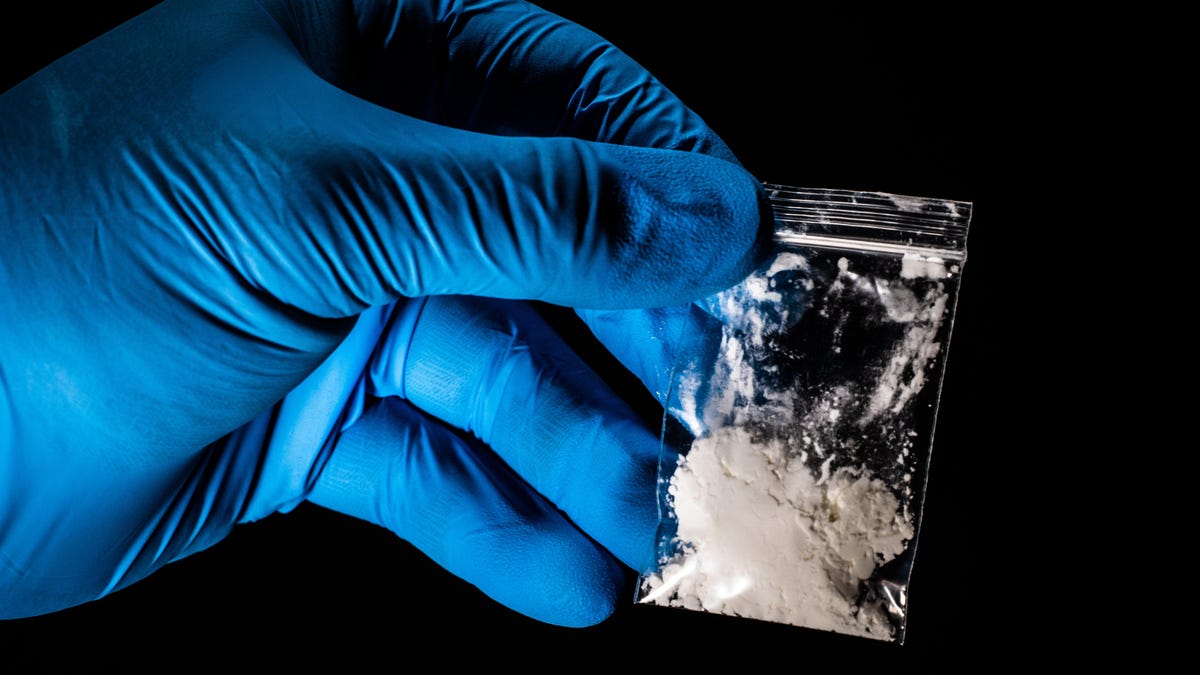What People Are Doing Wrong This Week: Fentanyl

The fentanyl headlines are shocking. Drug overdose deaths in the US increased by 58% between 2019 and 2021, at least in part due to the influx of this super-charged synthetic drug into the country’s illicit drug supply. Just two milligrams of fentanyl can cause an overdose, the amount of powder that can fit on the tip of a pencil.
Some of the most frightening reports about the drug involve accidental overdoses – people who touched the powder and fell out instantly. Fentanyl is definitely a hard drug—it’s said to be 50 to 100 times more potent than morphine—but it’s not magic. Despite reports to the contrary from law enforcement officials , local news stations , and Facebook posts , fentanyl overdose resulting from accidental skin contact is highly unlikely. You will almost certainly not be able to “contaminate” a fentanyl overdose by picking up a contaminated dollar bill, touching the handle of a shopping cart, or accidentally inhaling the powder.
“That never happened,” Dr. Ryan Marino, a toxicologist and emergency room physician who studies addiction at Case Western Reserve University, told NPR . “There has never been an overdose through skin contact or accidental inhalation of fentanyl.”
However, the fentanyl overdose panic isn’t just annoying. This is potentially deadly – misconceptions about the drug can cause first responders to be hesitant to help consumers.
Fentanyl does not easily enter the body.
Some of the misconceptions about fent may come from the fact that it is often used medically. Fentanyl usually comes in patches designed to release the drug over time, but this does not mean that it is readily absorbed through the skin. Fentanyl patches are made from other substances that allow the drug to be delivered – otherwise they wouldn’t work. That’s why you don’t see drug addicts rubbing themselves with white powder to get high.
Smoking fentanyl is one of the primary ways drug addicts use drugs, but experts say breathing in second-hand smoke from the user carries very few risks. “There is no real risk for the average person to be exposed to secondhand opioid smoke,” writes Scott Phillips , medical toxicologist and medical director of the Washington Poison Control Center. “When someone smokes fentanyl, most of the drug is filtered out by the user before secondhand smoke occurs.”
The same applies to boosted fentanyl in the air. Fentanyl isn’t normally “airborne,” so unless you’re caught in a wind tunnel filled with fentanyl, there’s virtually no chance of accidentally inhaling it. “The idea that it’s hanging in the air and being inhaled is highly implausible – it’s almost impossible,” Brandon Del Pozo, a former police chief who studies addiction and drug policy at Brown University, told NPR .
So where do all these reports come from?
If accidental exposure to fentanyl poses such a small risk, then why are there so many reports of police officers , bus drivers , and the general public experiencing an immediate adverse reaction to what they think is fentanyl? It’s probably fear. Many people who suspect they have been accidentally exposed to fentanyl report symptoms that look suspiciously like those of panic attacks. Given the mixed reports about the drug, panicking is an understandable reaction to believing you’ve been exposed.
The Real Dangers of the Fentanyl Panic
The climate of hysteria around this drug can cause it to oscillate when touched or treated by a person who overdoses, meaning longer response times and a greater chance of death. There aren’t really any statistics on hesitancy in drug treatment, but it’s a fairly potential problem that programs create to educate first responders about the real dangers they face. Ordinary citizens, however, are more likely to be misinformed, so it is important to know that the danger of administering the Narcan overdose drug, performing cardiopulmonary resuscitation, or otherwise touching a person with a fentanyl overdose is extremely unlikely to pose any risk. for good health.
How do accidental fentanyl overdoses really happen?
The people who are most at risk from an accidental fentanyl overdose are not police officers or paramedics; they are drug addicts. Fentanyl is often mislabeled by dealers, and even if it is sold as fentanyl instead of a “taming” opiate like heroin, finding the right dosage for such a powerful drug can be tricky, and even a small mistake can lead to death. Even when purchased from a “bona fide” dealer, a small amount of fent can be accidentally mixed with another substance – not that illicit drug manufacturers have strict quality controls.
Another demographic that has something to fear from the accidental exposure to fentanyl is children. Despite reports from the Drug Enforcement Administration , drug dealers almost certainly do not create candy-like baubles, but reports of children accidentally overdosing after coming into contact with a used band-aid or eating pills casually scattered around are depressingly common and all too real.
How to actually protect yourself from an accidental fentanyl overdose
- Don’t take drugs . This is a reliable method to prevent overdose, but otherwise:
- Use safer drugs . Alcohol and weed are pretty fun, may be legal where you live, and despite some reports to the contrary, are usually free of fentanyl . (You can overdose on alcohol.)
- Use fentanyl test strips. If you decide the risk is worth it, test your substances before using. Fent appeared in a bunch of unrelated drugs, so check what you’re taking before taking it. You can buy fentanyl test kits on Amazon for very little money .
- Have naloxone/narcan on hand if you are taking any opiates. And make sure someone is around to give it to you in case of an overdose. This overdose medication is available over the counter or online , is easy to administer, and has saved countless lives.